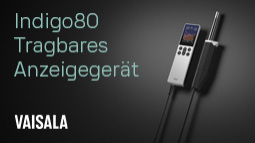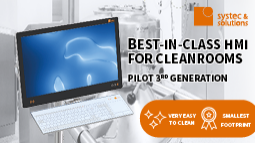- Injection moulding
Mass production of precision parts made of LSR has never been so efficient
At the K show 2022, ENGEL was joining forces with partner NEXUS Elastomer Systems to provide new impetus to the production of blade valves made of liquid silicone rubber (LSR). The fully automated high-end production cell combines maximum output with maximum quality consistency, substantially improving cost effectiveness at the same time.
Whether in cars, medical technology products or packaging, blade valves are used in a very wide range of applications. What all of these applications have in common is the very strict process consistency requirements in terms of injection moulding production. The precision of the small parts is safety-relevant. It is essential to combine this requirement of quality with maximum efficiency and cost-effectiveness in mass production.
The production cell at the ENGEL stand leveraged the quality and efficiency potential for the production of blade valves with a blade diameter of 7 mm in the best possible way. It combined an e-victory injection moulding machine and smart digital assistance with NEXUS's innovative mould and plasticising technology. Production was fully automated in a 64-cavity mould with an ENGEL easix articulated robot and an integrated vision control system for 100 percent quality control.
Consistent quality with iQ
Featuring tie-bar-less servo-hydraulic clamping and electric injection units, the injection moulding machines from the ENGEL e-victory series are predestined for precision applications with LSR. The electric ENGEL injection unit ensures high-precision injection. On top of this, the machine design features of this model support low-flash, rework-free processing of low-viscosity materials. The moving platen follows the mould precisely while clamping force is being built up, which results in excellent platen parallelism. Patented force dividers ensure that the clamping force is distributed evenly over the entire platen face. Even for large multiple-cavity moulds, the cavities near the outer edge of the platen are kept closed with exactly the same clamping force as those nearer the centre.
But the highest possible machine movement precision alone is not enough. It is in cases of batch fluctuations in the raw material, or environmental conditions, for example, due to weather conditions, that digitalisation comes into its own. Equipped with the iQ weight control smart assistance system from ENGEL's inject 4.0 portfolio, the injection moulding machine continuously analyses the injection profile and readjusts quality-relevant process parameters in the same cycle whenever deviations from the reference cycle occur.
Compact automated
The excellent accessibility and the space available in the mould area are unique on this tie-bar-less injection moulding machine. Where multiple-cavity moulds are used, smaller machines than the mould size would normally dictate can be used in many cases. This keeps both investment outlay and operating costs low. At the same time, the productivity per unit of area, a key efficiency indicator in many operations, and especially in cleanroom production, is boosted.
The ENGEL easix articulated robot ensures optimum space utilisation on the automation side and also requires very little headroom. It connects the injection moulding machine with camera-based quality control and the discharge station and adapts flexibly if additional process units need to be retroactively integrated upstream or downstream of the injection moulding process.
NEXUS designed the 64-cavity mould with a demoulding device; this means that the parts can be picked up very easily and quickly by the end-of-arm tooling on the easix robot.
For high-precision control of the fill quantity, the cold runners in the mould are equipped with electric needle shut-off systems. NEXUS's Timeshot technology controls the fill quantity as a function of the injection time. Each cavity can be controlled individually, even in very large moulds with up to 128 cavities.
More transparency and reliability
NEXUS also specifically developed the ServoMix X20 LSR dosing system, which ensures air-free dosing of the liquid silicone rubber, for use on the smallest footprint. Via OPC UA, it is networked with the injection moulding machine and the MES authentig by TIG, an ENGEL Group company. This ensures full process data monitoring and complete traceability down to the level of the individual cavities.
This is the first time that ENGEL is demonstrating networking of the injection moulding machine and the LSR dosing unit via OPC UA in line with the Euromap 82.3 standard live at a show. What becomes clear is how networking makes production more transparent and reliable and how work processes are accelerated.
The process data of the dosing unit are available during ongoing production in the CC300 control system of the injection moulding machine and can be used for even more precise process monitoring and continuous process optimisation. The dosing parameters are stored in the mould's part data record. This means that they are immediately available at the machine control when the mould is set up again.
ENGEL AUSTRIA GmbH
4311 Schwertberg
Austria










